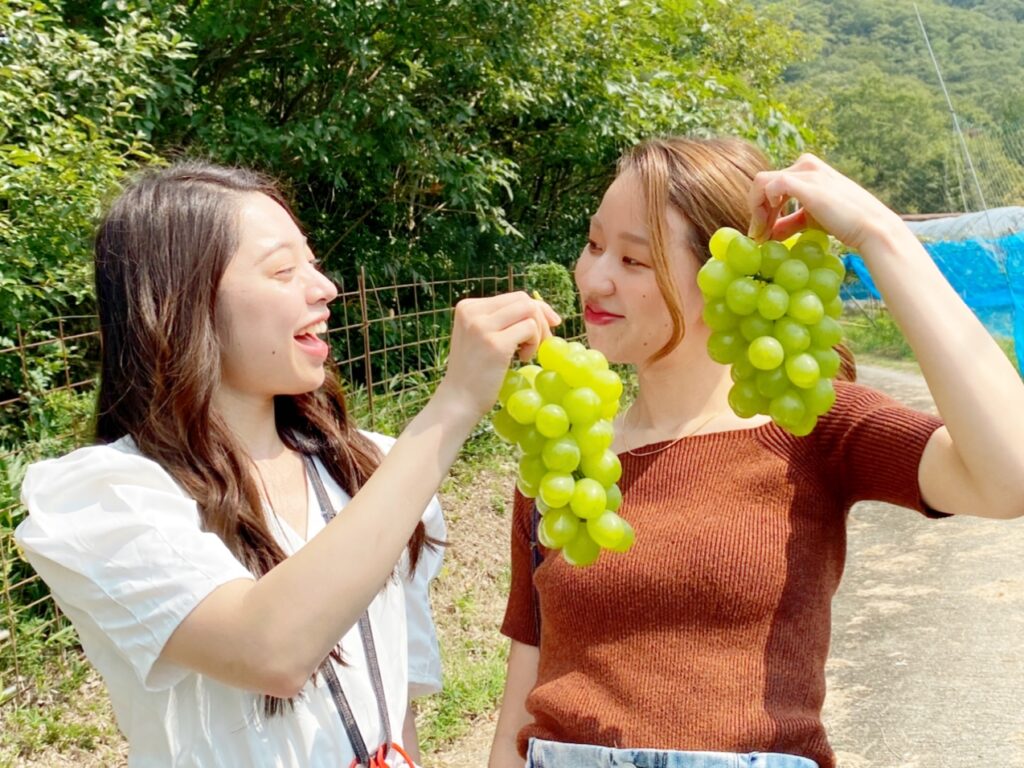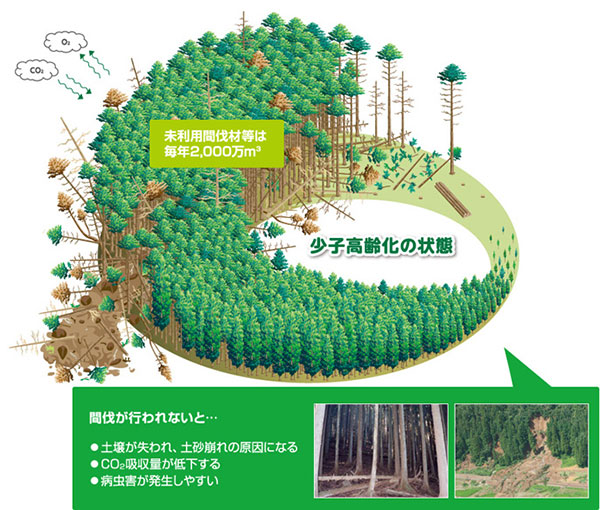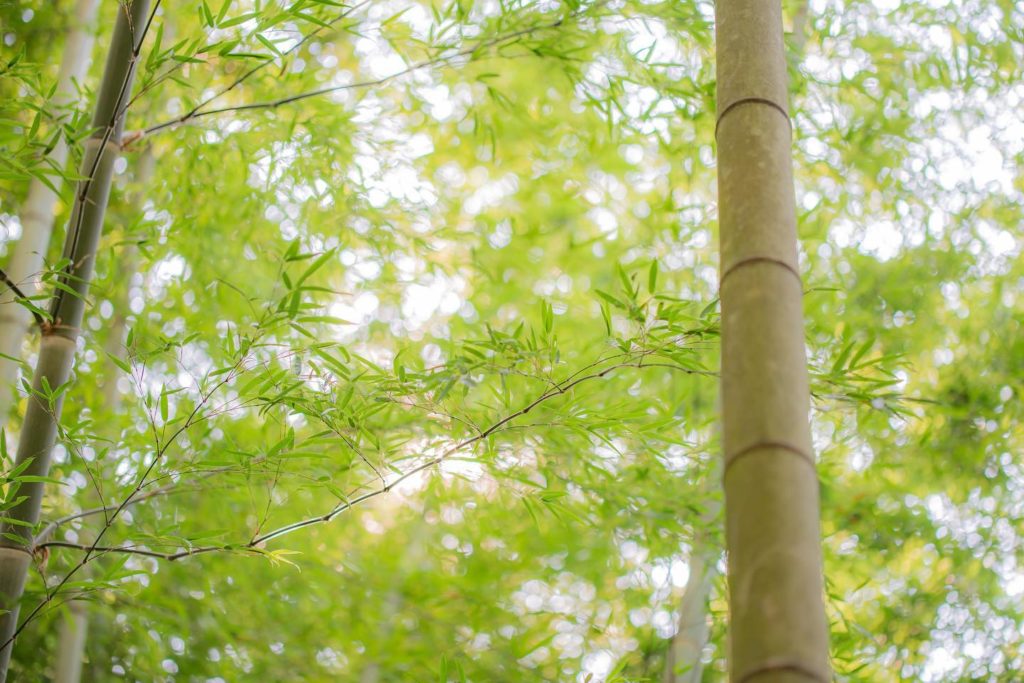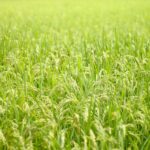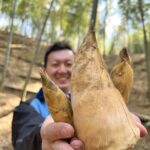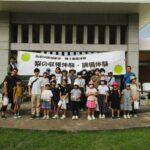With their graceful appearance and refreshing colors, cherry blossoms are a symbol of spring in Japan.
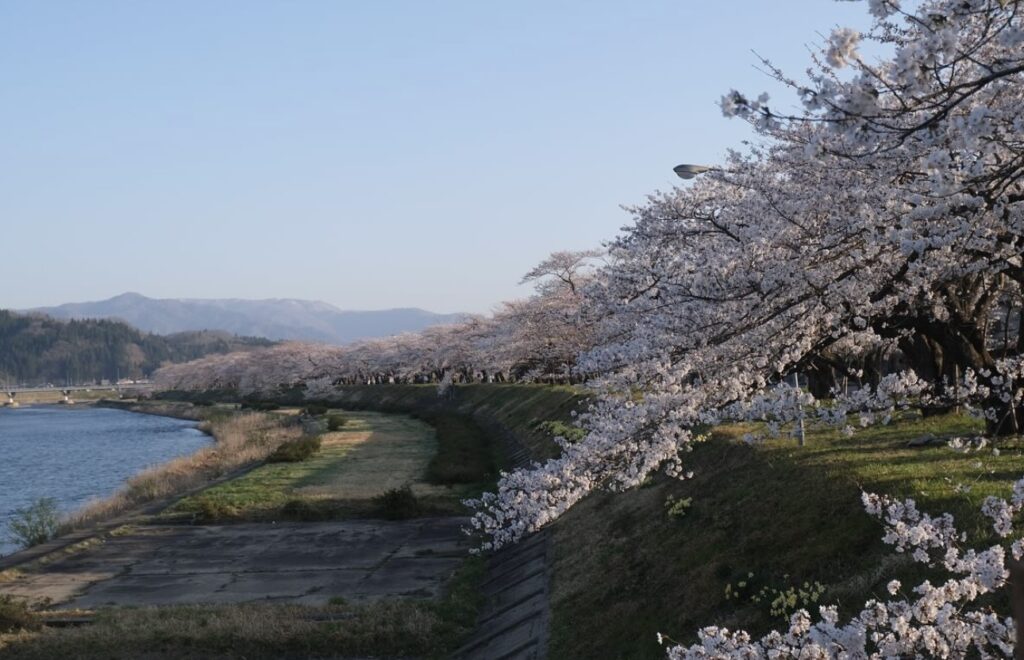
View of cherry blossom trees
But in addition to their beauty, do you know the surprising fact that cherry tree bark has antibacterial properties?
Antibacterial properties of cherry tree bark
According to the JIS Z 2801:2000 "Antibacterial Test of Cherry Bark" dated April 7, 2010, cherry bark (Japanese named “Ouhi”), the bark of the wild cherry tree, was found to have antibacterial effects against Escherichia coli and Staphylococcus aureus. (Researched by the Japan Food Research Laboratories)
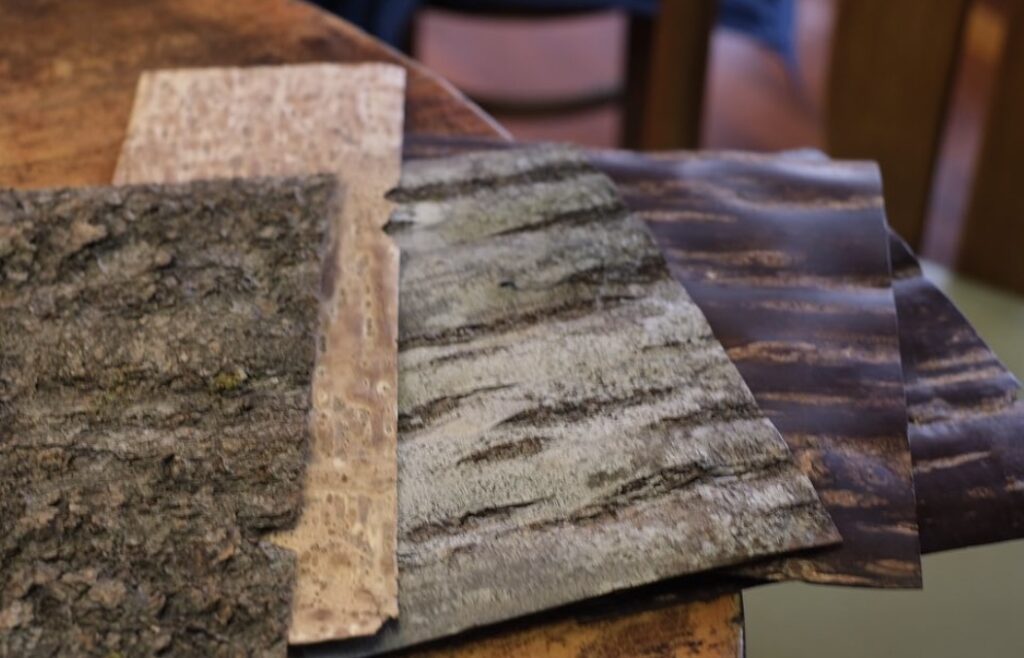
Bark of the wild cherry tree “Ouhi”
◆Why does cherry bark have antibacterial properties?
There are many types of trees, but the common components present in large amounts in the bark of all types of trees are polysaccharides (such as cellulose), lignin, bark phenolic acid, and suberin.
Polysaccharides and lignin are also contained in the xylem inside the bark, but it also contains components that are difficult to decompose, such as bark phenolic acid and suberin.
Bark phenolic acid is a polymerized form of tannin, a type of polyphenol that is generally existing in the plant world. Tannin has an astringent effect and is characterized by a strong bitter taste when ingested (it is also found in red wine, etc.). It is used in cosmetics and other products because it has the effect of tightening pores when applied to the skin. It is also said to be effective in preventing arteriosclerosis, preventing lifestyle-related diseases, regulating the intestines, and whitening the skin, as it has antioxidant properties.
In addition, in experiments where bark phenolic acid was decomposed by several types of white-rot fungi (filamentous fungi: a type of mold), it was reported that significantly more difficult to decompose than lignin.
For these reasons, it is thought that bark contains substances that are difficult for microorganisms to decompose, and therefore is less susceptible to rotting than xylem.
Reference paper: Chemical Properties of Bark, by Katsumi Hata (1967), Material, 16 (169):777-783
https://www.jstage.jst.go.jp/article/jsms1963/16/169/16_169_777/_pdf/-char/ja (Japanese Only)
Reference: The Japanese Society of Plant Physiologists (Japanese Only)
https://jspp.org/hiroba/q_and_a/detail.html?id=5274&key=&target= (Japanese Only)
Additionally, the bark of wild cherry trees contains “sakuranetin” and “genkanin”, which are flavonoids as a type of polyphenol.
“sakuranetin” is known to have antibacterial properties against the rice blast fungus, which causes serious damage to rice growth.
◆Can be herbal medicine!?
In addition, cherry bark (mainly Wild cherry tree) has long been used as a herbal medicine called "Ouhi."
Cherry bark has been used in a variety of ways as a folk remedy in the Edo period, and in Japanese herbal medicine, Jumihaidokuto, which contains cherry bark, was prescribed as an effective condiment for mild suppurative eczema, dermatitis, and urticaria.
These effects are likely due to the flavonoids sakuranin, sakuranetin, glucogencanin, and naringenin contained in Wild bark “Yamazakura”.
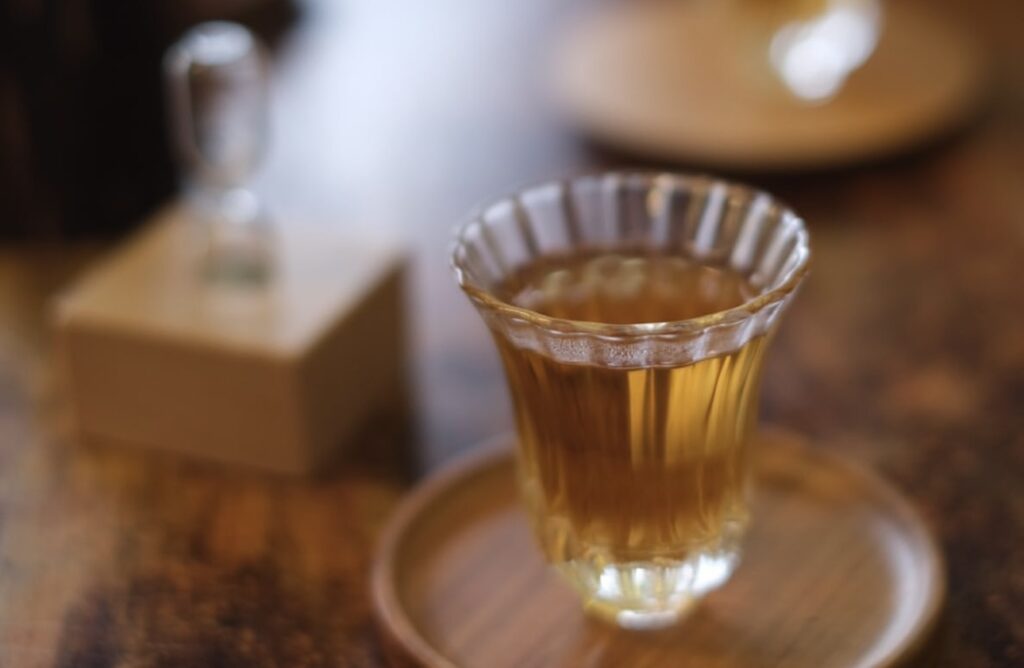
桜の皮を使ったお茶
As mentioned above, the reason cherry bark has antibacterial properties seems to be due to the ingredients contained in the bark and the ingredients that only wild cherry bark “Yamazakura” has!
◆Antibacterial properties are also useful in everyday life!
In addition to herbal medicine, the bark of this wild cherry tree (“Yamazakura”) is also used in a variety of products using a Japanese traditional technique called "Kabazaiku” in Japanese.

A “Kabazaiku” tea canister made from the bark of the wild cherry tree
“Kabazaiku” is a unique craft in the world that uses the bark of wild cherry trees. It is said that the origin of the word is that wild cherry blossoms were described as "kaniha" in a long poem in the Manyoshu, which later evolved into "kaba."
“Kabazaiku” is an attractive craft for the beauty of the material, but at the same time, it is based on the excellent properties of the material, including antibacterial properties. One of its characteristics is its ability to suppress moisture.
Reference: Functionality of wood (Japanese Only)
Products that make use of the characteristics of wood, such as medicine box, traditional bags, and tea caddies, have been created over the years, and traditional techniques have been passed down.
Items that are touched every day, such as tea canister, become more lustrous and maintain the unique luster of wild cherry blossoms.
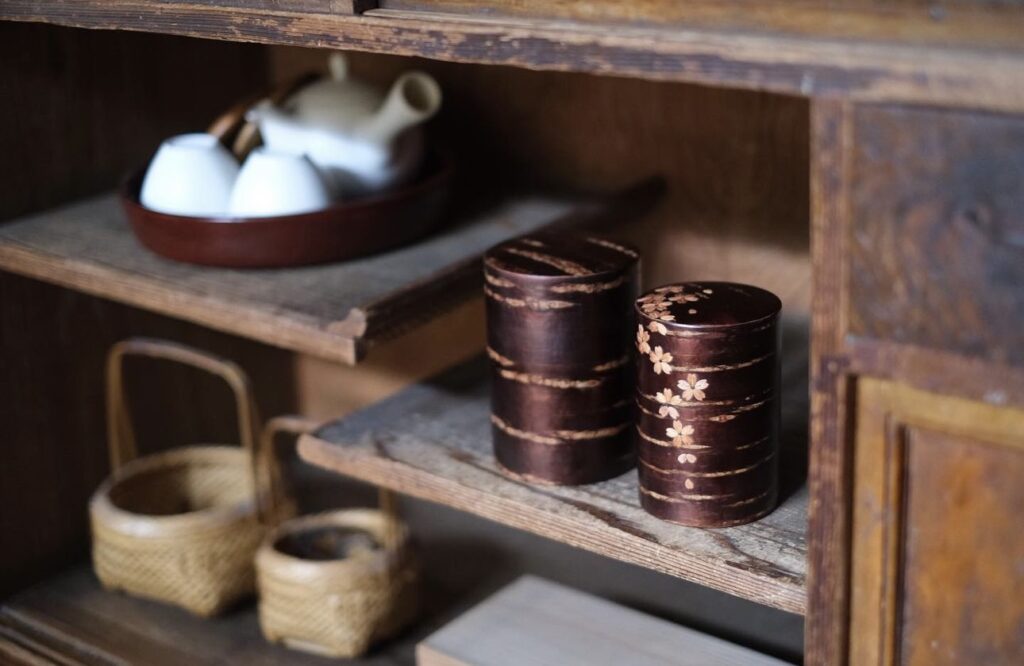
The characteristics of wooden products and “Kabazaiku” that become more lustrous with use
◆Craftsmanship using tree bark
When the bark of wild cherry trees is peeled off using techniques that have been passed down for generations, it regenerates in a few years and does not kill the tree.
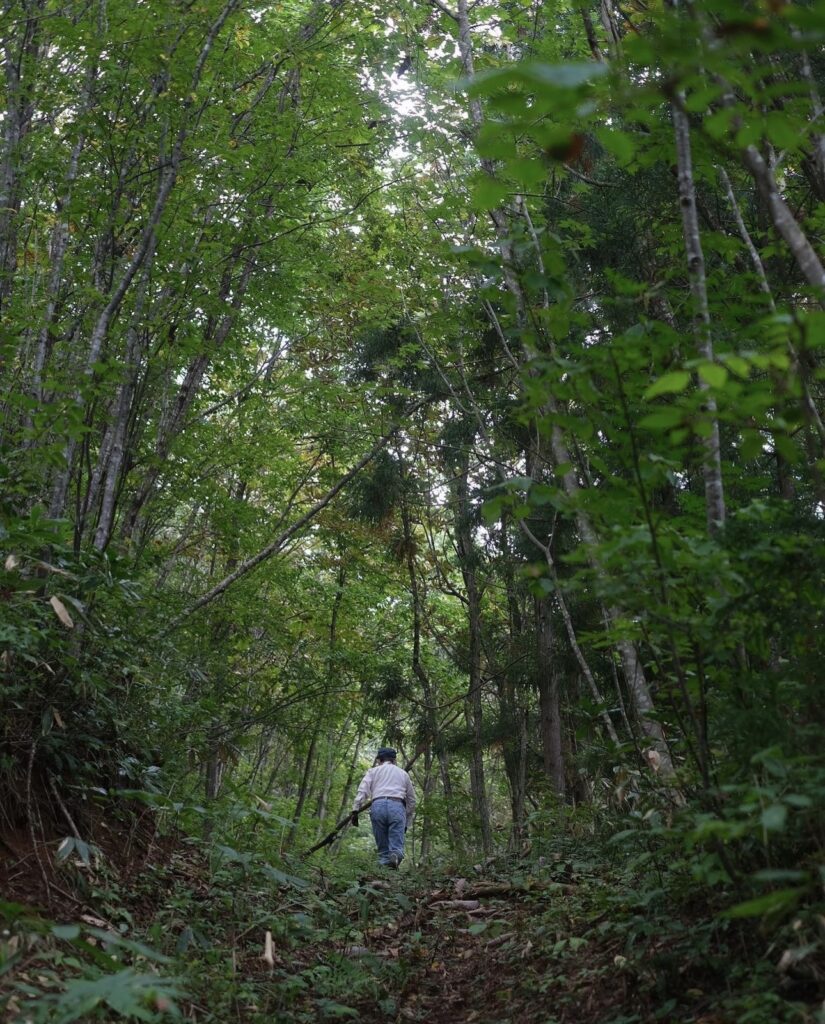
Peeling the bark off wild cherry trees
Then, through careful drying and processing, it creates products that take advantage of the antibacterial properties and other functionalities of wild cherry bark.
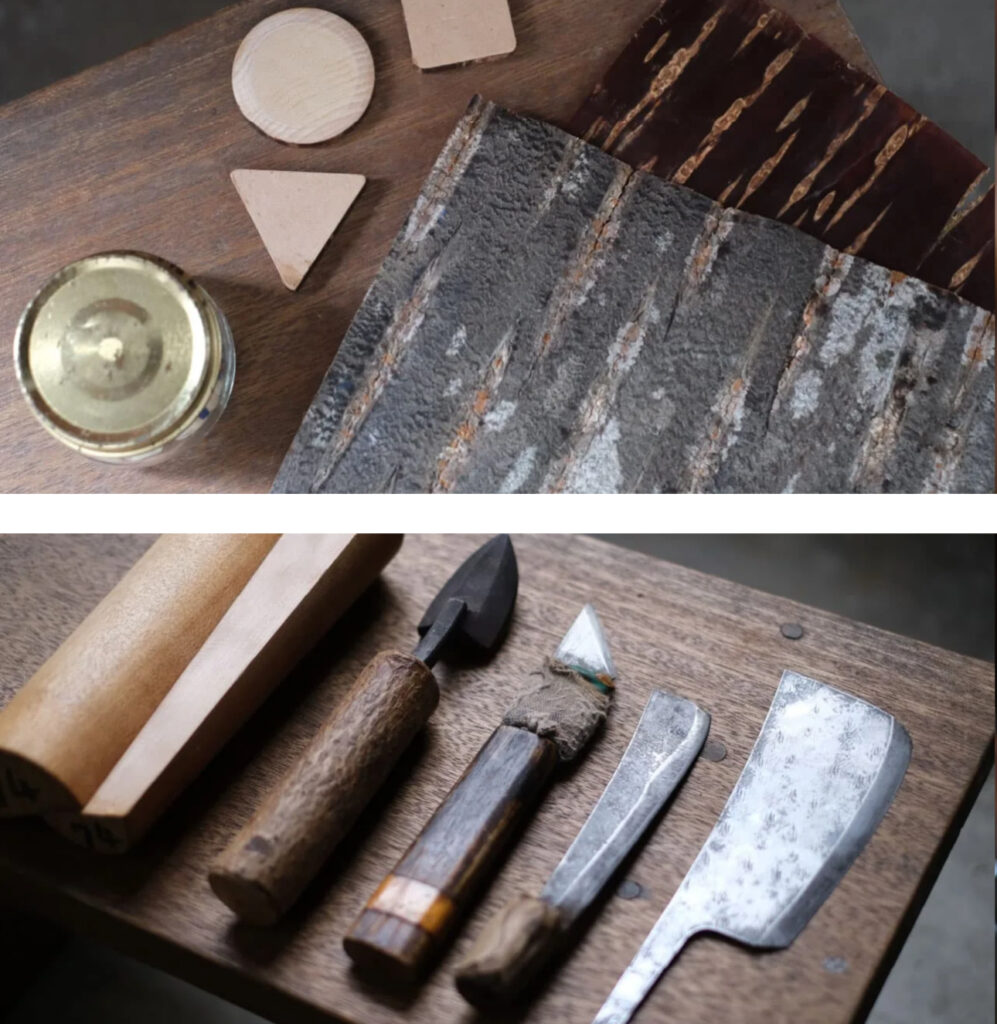
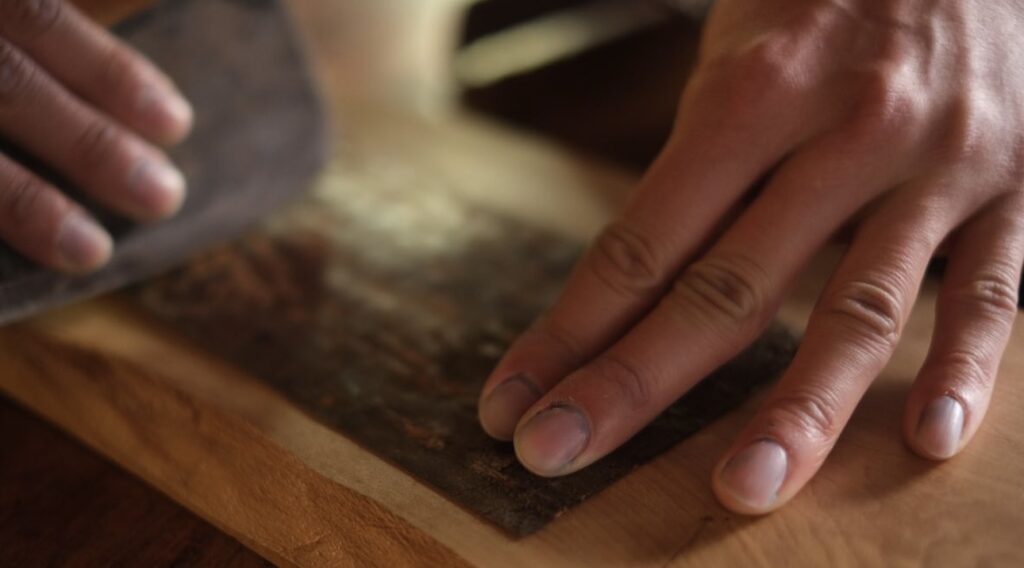
◆Attracting attention from overseas!?
Not only in Japan, “Kabazaiku” crafts are also recognized and loved overseas for their appeal.
Their beautiful design, texture, and their antibacterial and moisture-absorbing properties make them popular with customers from overseas.
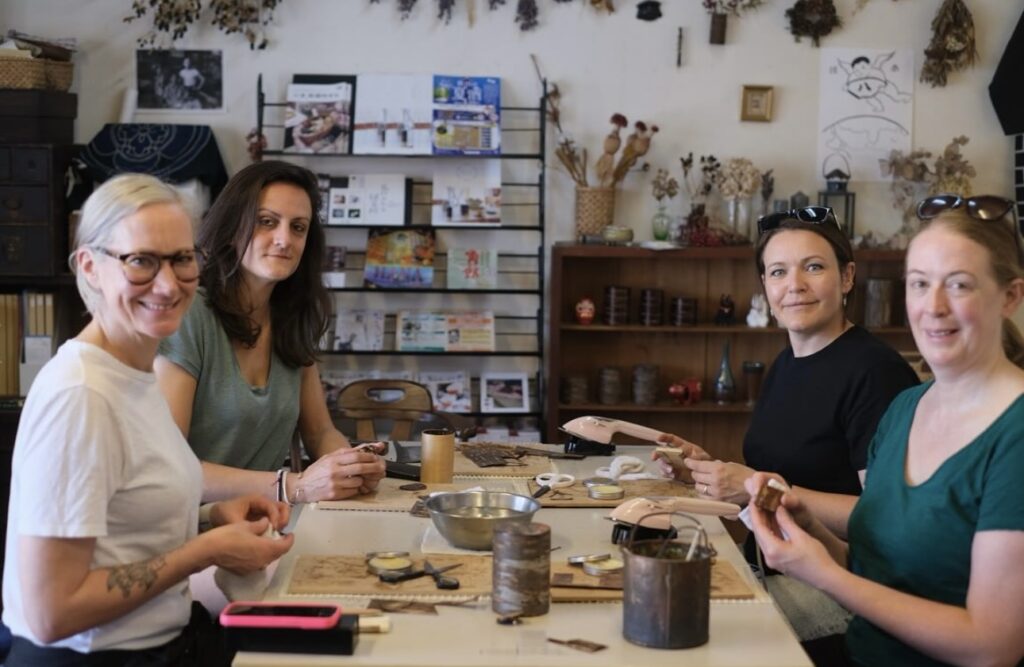
“Kabazaiku” craft workshops are becoming popular with visitors and inbound tourists from overseas to Japan!
“Kabazaiku” craft, which have long been used in Japan as tea canisters, are now used to store coffee beans, and are used in a variety of ways depending on the era and culture, such as for smartphone cases and accessories.

“Kabazaiku” craft accessories
We would like to spread the appeal and functionality of wood to many people, and pass on the good environment of the mountains and forests that nurture it to the next generation!
◆Product development which combines tradition and innovation!?
This “Kabazaiku” craft is a traditional craftsman technique that has been passed down in Kakunodate, Senboku City, Akita Prefecture. “Yatsuyanagi”, the manufacturer and seller of Kakunodate Kabazaiku craft, has been making them since 1876, around 150 years!
Strawberry Farm Co., Ltd., which is based in the same area and produces and sells summer strawberries, has led a connection with its sister company Naka Wood Co., Ltd., and a new product has been launched that utilizes both companies' technologies!
By applying the traditional “Kabazaiku” craft technique to a new environmentally friendly material called bioplastic made from Naka Wood's wood powder, a lightweight and durable tumbler, named “Sakura Tumbler”, has been created.
“Sakura Tumbler” product site click here => Sakura Tumber
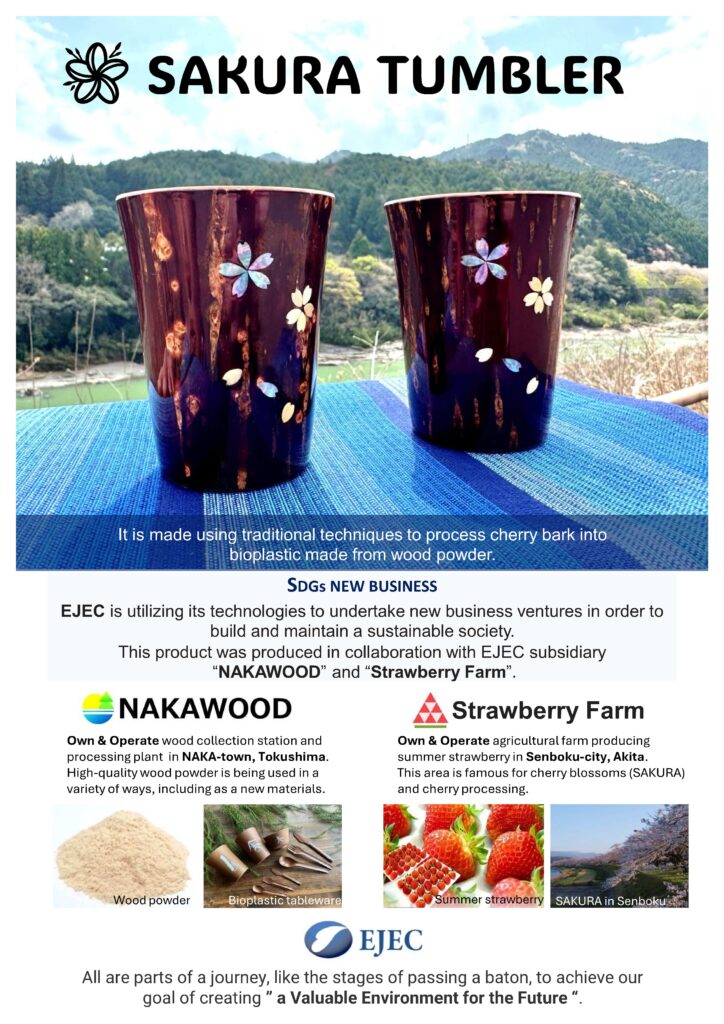
We hope that people from overseas can experience the craftsmanship that comes from local regions of Japan through Sakura, cherry blossoms, which are also popular among people from overseas.
If you want to know more about traditional “Kabazaiku” crafts, click here:↓

